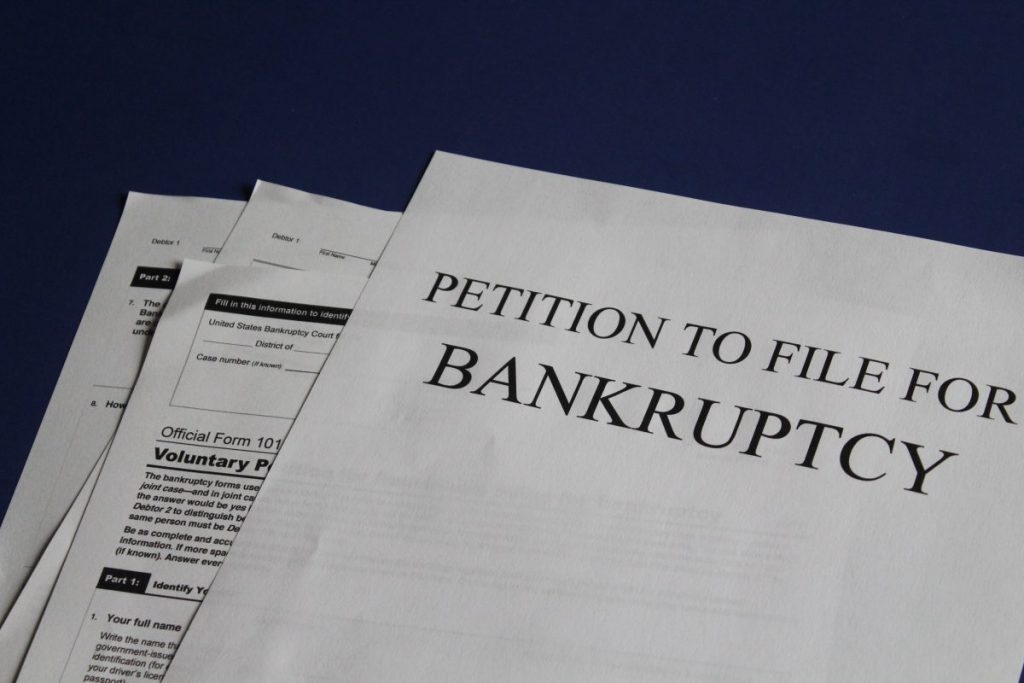Filing for bankruptcy can be complicated, especially if you do not have the guidance of a lawyer. You don’t just wake up to a courtroom and tell the judge you are broke. Therefore, anyone with the intention of filing for bankruptcy needs to maneuver well.
The Process of Filing for Bankruptcy
When filing for bankruptcy, follow these steps.
1. Get Compulsory Credit Counseling
You need to get credit counseling six months before you can file for bankruptcy. This is a requirement by the law that was revised in 2005. This counseling should be provided by an agency that is approved by the United States Trustee’s Office.
You can check directly from their website to see a list of those that are authorized. Filing for bankruptcy without the credit counseling will lead to the immediate dismissal of your case.

2. File and Petition and Other Forms
To initiate a bankruptcy case in a court, you need to provide financial information and a form with a list of your income and expenses. You also need to claim property exemptions so that you can retain those properties in bankruptcy.
The federal and state laws allow an individual to maintain ownership of property in bankruptcy. This step prevents you from creditor collection actions while the case is being heard.

3. A Trustee Takes Over
Once you have filed for bankruptcy, the court appoints a trustee to handle the case. The work of the trustee is to review the paperwork. You also need to provide him with your recent tax return. He then takes your nonexempt property to distribute it to your creditors.
4. A Meeting of Creditors
This meeting of creditors is also known as the 341 meeting. The court will notify you when the meeting will take place. During the meeting, you are required to answer questions regarding your bankruptcy forms and finances.
This is done under the oaths from the trustees who turn up. In most cases, none of the creditors turn up. Usually, the meeting is very short. See this video below on how prepare yourself for a 341 meeting.
5. Confirmation of Your Eligibility to File for Bankruptcy
This step usually requires the trustee to decide whether you are eligible for Chapter 7 protection. The decision is based on the information he gathers after reviewing your documents. To pass this step, you must pass the test that compares your income and expenses to determine if you are eligible for the repayment plan.
6. Handing of Nonexempt Property
In case you have a nonexempt property, the trustee will have to decide about whether to seize it, resell it or distribute it to creditors. You can agree with the trustee to keep some nonexempt property if you can raise enough money or willing to submit the exempt property. These exempt property calculations that apply to your situation vary on a state-by-state basis.
Exempt property is property that can neither be passed by will nor claimed by creditors of the deceased in the event that a decedent leaves a surviving spouse or surviving descendants. Exempt property includes a family car, and a certain amount of cash (perhaps $10,000-$20,000), or the equivalent value in personal property.
7. Dealing with Secured Debts
In case you have debts that are secured, the trustee has the right to seize it. To get the property back, you need to pay the creditor the amount due. Alternatively, you can reaffirm the debt by agreeing that you still owe the creditor once the bankruptcy case is over. The reaffirmation needs to be done in the presence of a lawyer. If this does not happen, then it is a must you attend a reaffirmation hearing.
8. Taking Financial Management Lessons
Before you can get your discharge, you must enroll for the debtor’s lessons. This is a requirement that was added to the bankruptcy law that was amended in 2005. After completing the course, you then need to file form 423 with the court.
9. Get Your Discharge
To get the bankruptcy discharge, it takes between three to six months. It is usually sent via mail. Receiving the discharge means that the automatic stay has been lifted.
10. Closure of the Case
Once you get a bankruptcy discharge, the bankruptcy case is closed. You will seize being liable to your creditors and this sets you free to move on with life.
